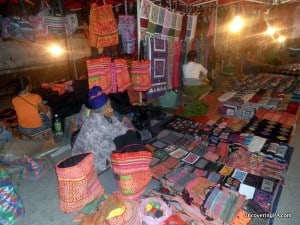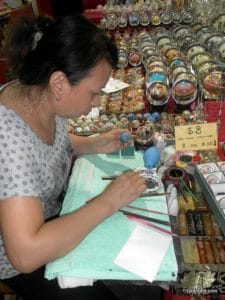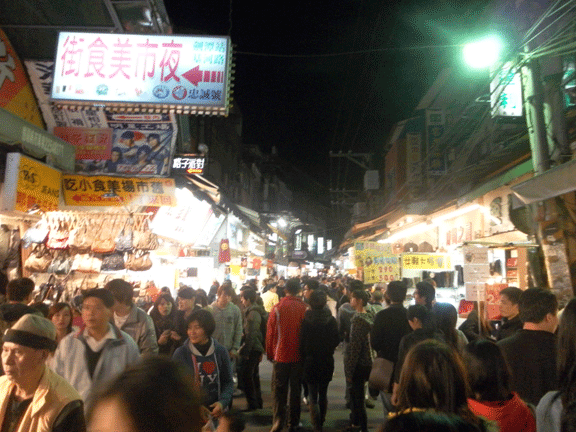If you’re from a western country, it’s likely that haggling for prices isn’t something you do every day. Sure, you might negotiate a price every few years for a new car or a place to live, but it’s not something you do on a regular basis.
I mean, how many chances do you really have? After all, most places you visit in North America, Europe, or Australia have fixed prices that don’t deviate much. At the most, you might occasionally throw out a slightly lower price to see if they bite, but usually nothing more.
However, when traveling, especially in Asia, Africa, and South America, haggling is a daily part of the culture.
When I started traveling, the thought of haggling made me really nervous. However, now that I’ve had the chance to haggle many, many times, I feel like I have a few tips that can help you start haggling like a pro!
Don’t Be Afraid to Haggle
The first step to haggling is to just do it. If you are in Asia, Africa, and South America and the product doesn’t have a price tag, haggling is fair game. Worst case scenario, they will reject your offer and tell you the original price again. They certainly won’t be offended though. So, don’t be afraid of upsetting someone; just do it.
However, don’t start haggling unless you intend to buy the product. If you give a price, and they accept it, it’s very bad form to not buy it at that point.
So, tip one: Don’t be afraid to haggle, but be ready to buy if you do.
Know a Bit of the Local Language
Knowing some of the local language can be immensly effective in bargaining. If you know enough to ask for the price and bargain in the local language, the seller will likely assume that you know what a fair price is for the item, and is less likely to try and rip you off.

However, even if you just know a bit, it can be helpful in creating a friendly atmosphere. A simple phrase, like “That’s too much” or even throwing out a number or saying “please” in the local language can go a long way in making the seller like you more, which should result in a lower price.
Shop Around
If you’re shopping for a souvenir or something else with multiple sellers in the same area, there’s no harm in checking out the pricing. Even better, if you can find a store with marked and fixed prices, you should at least be able to determine a fair, top-dollar price. By haggling, you should be able to get the item for less.
Shopping around should also help you figure out how much flexibility there is in the price. I’ve visited countries where haggling might save you 5-10%, but I’ve also visited places, like Beijing, China, where paying 10% of the original asking price isn’t uncommon. Just because you saved 50% off the original price doesn’t necessarily mean you got a good deal.
Shopping around will help you avoid paying $10 for something you could have bought for $2.
Be Prepared to Walk Away
Walking away can be a very effective strategy to bargaining. However, if you start to walk away, you need to be prepared to walk away from the item. The shopkeeper may chase you down, but he also may not. If you walk away and then come back, the seller will know you really want the item, and you’ll be unlikely to get any more discounts.

Be Happy with the Price You Pay
I really enjoy haggling for prices, but I always walk away wondering if I got the best price. If I had walked away, would they have taken that extra 10% off? What if I had started lower?
Ultimately though, you need to pick a price you’ll be happy with, start your haggling below that price, but don’t go over it. If you’re happy with the price and the seller is happy with the price, don’t worry if you paid too much.
Have Fun
This is the most important piece of advice I can give you about haggling. If you aren’t having fun, you’re doing it wrong. The goal of haggling is to come up with a fair price for both parties, not to gouge the seller of every last penny.
In many places where haggling is common, you may make in a week what the seller makes in a year, so try not to get upset when they offer you a t-shirt for $80. Instead, figure out your best price and start from 10-20% below that.
Don’t worry about screwing the seller, they won’t sell the item to you unless they make some money, but don’t worry so much about the price that you don’t have fun with the process.
Do you have any other haggling tips for nervous travelers? What about funny haggling stories? Share them in the comments section below.

Jim Cheney is the creator of Tripologist.com. Having traveled extensively in North America, Europe, and Asia, Jim enjoys sharing his love of travel and some of his favorite places to visit around the world. He lives in Pennsylvania, USA, with his wife and two kids.





![An Insider’s Guide to Working in Australia [Guest Post]](https://tripologist.com/wp-content/uploads/2013/07/Bondi-Beach-250x200.jpg)
Good advice–thanks! My husband and I walked away from a car deal (we couldn’t afford it) and the salesman came after us. Sometimes it works!
That’s great, Dale! I once got a car for $3500 under invoice by bargaining hard and threatening to walk away. That tactics sometimes works, whether it’s a $15,000 car or a $5 souvenir.
Having just been to Luang Prabang, I’m reminded that most Asian markets have one thing in common:
There are several of them selling the same stuff in the same area, at roughly the same starting price.
I’d also remind hagglers to be sensitive to your tactics – and how tactics will change in different countries. Laos, for example, is very laid-back and non-confrontational. India, however, you may need to raise your voice to actually get an agreeable price… Watch how the locals negotiate – even if you can’t understand the words, you can still observe body language and such.